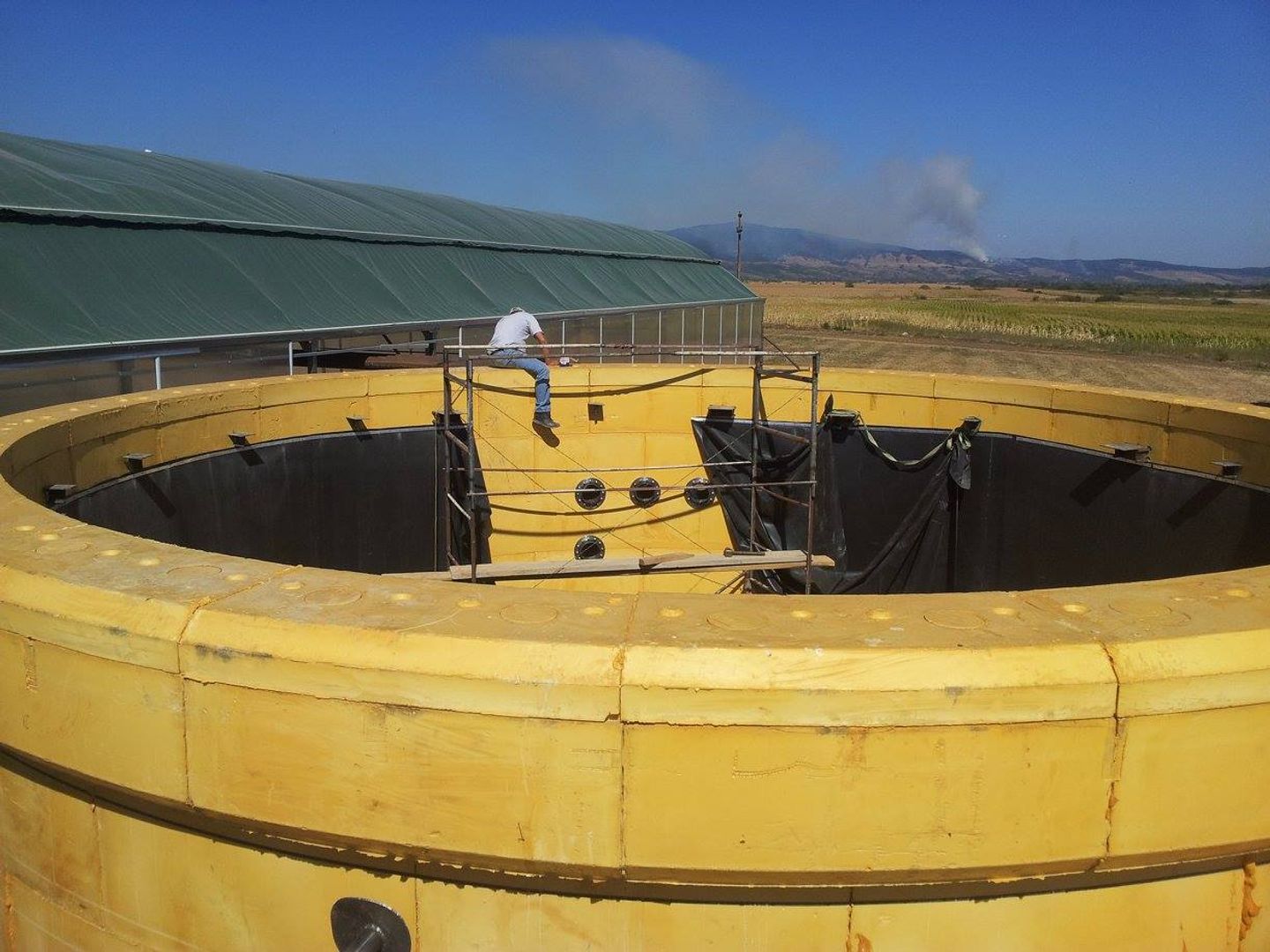

- Home
- Companies
- DIA DOXA FOLEX
- Articles
- The key to reducing expenses - energy ...
The key to reducing expenses - energy efficient buildings
A major fear of builders is that switching to a new method of constructing buildings will lead to higher costs. The Passive House Institute in Darmstadt has carried out numerous researches on energy efficient houses and confirms through the data collected over time that the situation is exactly the opposite - high level thermal insulation produces major savings in terms of heating requirements.
How we can build so that the investment is justified in the long term and what are the principles on the basis of which we obtain a high degree of isolation you will learn from the following observations, presented on the website https://passipedia.org/start
Thermal insulation - Principle of operation
In climates with demand for heating in the cold months, the entire building envelope must be well insulated. The building envelope consists of all the construction elements that separate the interior from the exterior. Its main purpose is to ensure a comfortable indoor climate – regardless of the outside climate determined by the weather. During cold periods (typically mid-October to late April in climates with cold winters) the temperature inside the building envelope is usually higher than outside. As a result, heat is lost through the envelope, and if this heat is not replaced, the inside of the building cools by adjusting to the outside temperature.
The reverse applies for warm climates (or during hot spells) with excessive heat entering the building through its envelope. Therefore, it makes sense to restrict heat flow in any building, regardless of climate - and this is where thermal protection comes in. (1)
→ An adequate level of insulation can also be applied to existing buildings at any given time, which is recommended for old constructions that incur enormous maintenance costs.
An important principle was derived from the experience with new energy-efficient construction: "If you`re going to do it, do it right!" -
Heat losses through external walls and roofs account for more than 70% of total heat losses in existing buildings. Therefore, improving thermal insulation is the most effective way to save energy. At the same time, it will help improve thermal comfort and prevent structural damage).
Financial support, such as low-interest loans, as currently available in various countries of the country, reduces the initial investment for improved thermal insulation; however, even without such incentives, the investment will be profitable in the long run, as a careful analysis shows. (2)
(For detailed information related to the economic calculations presented by the Passive House Institute, see the links at the end of the article or directly on the passipedia.com website)
The level of insulation in passive houses
The U-values (thermal transmittance) of the external walls, floor slabs and roof areas of passive houses vary from 0.10 to 0.15 W/(m²K) (for the climate of Central Europe; these values can be slightly higher or small depending on the climate). These values are not only benchmarks for all construction methods, but also the most cost-effective values at current energy prices.
Heat losses in cold periods are thus negligibly small, and the temperature of the interior surfaces is almost the same as the air temperature, regardless of the type of heating used. This leads to a very high level of comfort and reliable prevention of damage to buildings due to moisture accumulation.
In warmer climates or during the summer months, good insulation also provides protection from the heat. Effective window shades and sufficient ventilation are also essential to ensure maximum comfort during hot weather.
Good insulation and airtight construction have proven to be extremely effective in passive houses. Another essential principle is "design without thermal bridges": insulation is applied without "weak points" around the entire building, so as to eliminate cold corners as well as excessive heat losses. This method is another essential principle that ensures a high level of quality and comfort in passive houses, while preventing damage caused by moisture accumulation. (3)
Detailed information on passive house insulation
U values
Heat loss through a standard building component, i.e. external wall, floor, top floor ceiling or roof, is defined by the U-value or global heat transfer coefficient. This value indicates the rate of heat transfer through a given component over a given area if the temperature difference is one degree (1 Kelvin). The unit of measurement of the U-value is therefore "W/(m²K)". The lower the U-value, the better the level of insulation.
To calculate the heat loss through a wall, we need to multiply the U-value by the area and the temperature difference. In Central Europe, the average temperatures measured during severe winter periods are –12 °C outdoors and 21 °C indoors.
To calculate the annual heating loss, you need to multiply the U-value by the average temperature difference during the heating period by the duration of the heating period, or in other words, multiply the U-value by the degree of heating hours – which is 78,000 hours for an average climate central europe. (4)
Heat loss is a significant factor in the energy balance of a building. Any heat loss must be compensated by a corresponding heat gain, otherwise the temperature inside the house will drop.
A typical Passive House compact heating system can provide a heating power of around 1,000 W (this is the typical power of a hair dryer). The U-value of the wall of a passive house must be quite low; otherwise, a considerable part of this power would be used by the outer wall: for typical Central European buildings, the U-values of passive house walls should vary between 0.10 and 0.15 W/(m²K); depending on the climate, these figures can be slightly higher or lower. (5)
Experience
-
Measurements in completed passive houses have shown that the insulating effect of the "thick insulation layers" is exactly as expected. The actual heat losses were as low as calculated and the houses remained warm with the minimum declared heat input. This is proven by thermal imaging which reveals clearly high temperatures at the interior surfaces of the building. Highly insulating components, as used in passive houses, have significant advantages over standard building envelopes, which are typically poorly or moderately insulated. (6)
Why build an airtight house?
Indoor air has a higher water vapor content (absolute humidity) than outdoor air – if it is not dehumidified. In a cold climate, indoor air is cooled as it moves from indoors to outdoors (called exfiltration). The cooler air cannot hold the large amount of water vapor - condensation will occur in certain places in the building. This can lead to serious damage. In hot and humid climates, where the occupied rooms are to be cooled, the air flow will be dominant in the outside-inside direction (called infiltration) and will cause the same humidity problem. The process described here is the main reason why the outer structure of the building must be built airtight.
A really good seal is required for the passive house standard - the air flows discussed here will be negligible, which is one of the great advantages of the standard - without moisture problems, the components can last forever. (8)
It should be clarified how the tight connection is achieved. This clearly shows that tightness is primarily a planning task. Building contractors can only achieve this in a watertight manner if it has been thoroughly designed. (9)
Local thermal comfort
It is interesting that all comfort criteria are automatically met in an optimal way with the requirements of the Passive House Standard - High thermal insulation also improves thermal comfort. This can be explained as follows:
-
By improving the thermal insulation (regardless of the external component of the building to which it is applied) the flow of heat from the inside to the outside is reduced. Therefore, heat flow from the interior of the building to the internal surface of this exterior building component is also reduced. The heat flow overcomes the so-called thermal resistance of the surface (radiation and convection).
-
The lower heat flow results in less temperature loss at this surface, in other words: the temperature difference between the interior (room surfaces and indoor air) and the interior surface of the improved insulation component decreases.
-
The practical consequences are that, in the case of very well-insulated building exteriors, the temperature of the interior surfaces varies only slightly from the ambient temperature in the room; this applies to both summer and winter. This means that the internal surfaces of external components are moderately warm even in winter (external walls, roofs, etc. no more than 1 °C below the indoor air temperature, window surfaces a maximum of 3 to 3.5 °C below [ Pfluger 2003 ] (10).
